Its the final day of October, known better to most people has Halloween. But besides being a time to dress up, binge watch Halloween classics and eat as much candy as humanly possible, this is my one day break between one speed draft and another.
For the past three years now, I have written two manuscripts every time fall rolls around. I don't know why. For some reason I get really productive in the fall, particularly in October and November. So I take advantage and speed draft like the wind.
My first drafts, which I have taken to calling 'crap drafts' aren't pretty, as you might have guessed by their nickname. They are rife with telling, they over use weak verbs like 'was' and the conversations often prattle on past their welcome. But that's okay. Because its a first draft. And at least I have something to edit rather than nothing at all.
I have always been a fast drafter since I wrote my first novel sophomore year of high school. For years I never finished anything until that April. The words came so fast I had written a full book in one month. That, I discovered, was the key. In order to combat my frequently changing interests, I had to write as quickly as possible before my passion left me.
So I guess you could say I'm the kind of writer who is made for Nanowrimo. It works perfectly with my method of writing. And though it might not be for every writer, I STRONGLY recommend at least giving Nano a whirl. It can be a very rewarding experience.
So what am I working on this November? I'm completely rewriting my first novel. That's right the manuscript I wrote when I was just fifteen is getting a full on reboot. I'm excited about diving back in and discovering new things about my characters along the way.
So do you plan on doing Nanowrimo? What project are you going to work on? Let me know and happy writing!
A literary agent intern, writer and full time student treks through the forest of words
Friday, October 31, 2014
Friday, October 24, 2014
The Dreaded Sequel
So last year I got myself an agent for my Steampunk
Fantasy MS HOUR OF MISCHIEF. Now I’m writing the sequel, SEASON OF WIND,
because you know, it might be important down the line.
My thoughts on the matter? Sequels aren’t easy. You have to properly continue
the story while still developing an original arc, expanding the universe and
adding in new characters. And not only does the sequel serve as a follow up to the first book, but it usually has to make the
story much bigger.
Because readers? They always want bigger and better. Give a reader an awesome thing? They want MORE of the awesome thing. They want it bigger and better and awesomer.
 |
| Proper representation of myself when I finish a book and the sequel isn't out yet. |
That's the difficulty a lot of writers face when they write a good first book. They have to then live up to the expectations of the fans. I mean, imagine JK Rowling's fear when writing the seventh Harry Potter book. Most of the world was watching and dreaming up all the possibilities. And readers, especially huge fans, have very high standards. Its a tall order to fill. And then of course it completely lived up to those expecations (And I will fight anyone who disagrees.)
So how does one make things bigger and better and awesomer?
Well, let's think about Hunger Games. In theory, it does everything right. The series started out as
a small conflict. Katniss’ conflict. But as it expands to Mocking Jay, it
involves the fate of all of Panem. A lot of speculative fiction novels take
this approach by making things bigger and better with each novel. And for a lot of people, this worked. They loved the series more and more as it went on.
 |
| And now the movie is coming out so yaaay |
Some succeed. Harry Potter, for instance, grew in
quality and scope throughout the series, ending with the best book in my
opinion. Others struggle. For instance, I did not like Mocking Jay. It felt
rushed and slow at the same time and I didn’t like the execution of a lot of
key moments. But, you know, I'm still hopeful about the movie.
But what is the true secret to the amazing sequel? Honestly, it’s
hard to say. Its kind of an elusive task. I think the best way to live up to
the first book of any series is to expand upon the things that made the novel
work as well as add new elements to keep the story fresh. Whatever the case,
don’t lose the initial spark of your story. Because that’s what will make the
sequel shine.
Wednesday, October 22, 2014
Writer's Tips: World Building
World building is like a dragon. It’s fun of course. I mean, who doesn’t love dragons? They’re pretty much the most awesome thing that doesn’t exist. You know what has never made a story worse? The dramatic reveal of dragons. Just ask these two shows:

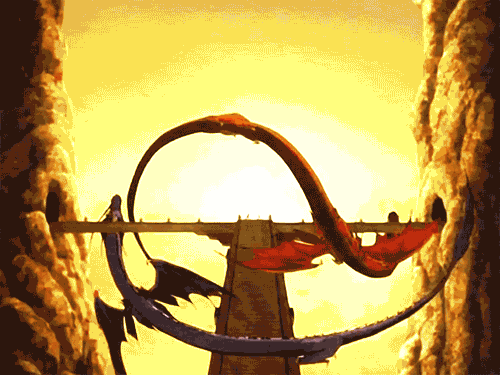
But dragons aren’t all fun and games. They’re huge, for one thing. They cause a ruckus and the burn down houses and armies. They’re really hard to control. And you have to do it just right or you could end up crispy bacon.
World building is the same way. If you have a fantasy novel, your world is huge but you have to control what information the reader gets and how and when they get it. And if you reveal too much or don’t reveal enough, the world will start blowing fiery plot holes in your novel.
Training dragons isn’t easy. And neither is world building. So here are a few tips to make it a little easier.
1) Make sure YOU know your world.
Before you start writing the first draft, make sure you have a handle on what your world. Everything about your world. Even if it doesn’t come into the story, it might subtly effect how you write in a good way. It could affect word use or character development without ever having to be explicitly stated. If you know the world, it could lead to some excellent showing instead of telling. And that’s exactly what you want.
2) Link your story to your world building
So how does your world then effect your story? The hard part of world building is finding the elements that relate to the plot and connecting them. You have to strike just the right balance of information and plot to make it seem believable and subtle. Sometimes you’ll be tempted to talk about parts of world that don’t really matter to the plot. Restrain yourself from this. Too much world building that isn’t plot related will slow down your story and make it a difficult read.
3) Avoid info dumps
Everyone knows this one. Info dumps are the poison of pacing, often slowing a story to a dead halt just to talk about something the writer thinks is cool and important. It might very well be cool and important. But it needs to be spread evenly throughout the story. That way the reader can digest your world slowly and not feel like they’re taking a history class on it.
4) Add in passing details
Passing details are good. Short little elements that can be expressed in a sentence. They might not have a ton to do with the story but they can help flesh out the setting and world without distracting too much from the plot. Little details give the world an extra level of realism.
5) Cut the ones that slow down the story
But the moment the details start slowing things down or feel too random: cut them out. Your story doesn’t need them to shine.
And that’s the gist of world building. It’s difficult, I know, but owe so rewarding. A great example of an amazing world builder is Brandon Sanderson. All of his stuff is incredible so check it out if for some reason you haven’t already.
Like I said, it’s a dragon, but dragons make everything better in the end.
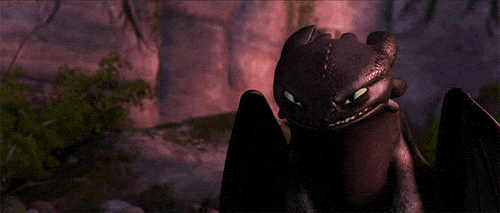


But dragons aren’t all fun and games. They’re huge, for one thing. They cause a ruckus and the burn down houses and armies. They’re really hard to control. And you have to do it just right or you could end up crispy bacon.
World building is the same way. If you have a fantasy novel, your world is huge but you have to control what information the reader gets and how and when they get it. And if you reveal too much or don’t reveal enough, the world will start blowing fiery plot holes in your novel.
1) Make sure YOU know your world.
Before you start writing the first draft, make sure you have a handle on what your world. Everything about your world. Even if it doesn’t come into the story, it might subtly effect how you write in a good way. It could affect word use or character development without ever having to be explicitly stated. If you know the world, it could lead to some excellent showing instead of telling. And that’s exactly what you want.
2) Link your story to your world building
So how does your world then effect your story? The hard part of world building is finding the elements that relate to the plot and connecting them. You have to strike just the right balance of information and plot to make it seem believable and subtle. Sometimes you’ll be tempted to talk about parts of world that don’t really matter to the plot. Restrain yourself from this. Too much world building that isn’t plot related will slow down your story and make it a difficult read.
3) Avoid info dumps
Everyone knows this one. Info dumps are the poison of pacing, often slowing a story to a dead halt just to talk about something the writer thinks is cool and important. It might very well be cool and important. But it needs to be spread evenly throughout the story. That way the reader can digest your world slowly and not feel like they’re taking a history class on it.
4) Add in passing details
Passing details are good. Short little elements that can be expressed in a sentence. They might not have a ton to do with the story but they can help flesh out the setting and world without distracting too much from the plot. Little details give the world an extra level of realism.
5) Cut the ones that slow down the story
But the moment the details start slowing things down or feel too random: cut them out. Your story doesn’t need them to shine.
And that’s the gist of world building. It’s difficult, I know, but owe so rewarding. A great example of an amazing world builder is Brandon Sanderson. All of his stuff is incredible so check it out if for some reason you haven’t already.
Like I said, it’s a dragon, but dragons make everything better in the end.

Friday, October 17, 2014
Lessons from Anime: Kino's Journey and Haibane Renmei
There’s something to be said for a small story. We
don’t hear a lot about them, do we? No, it’s the big, bombastic, highbrow stuff
that publishers go for. The blockbusters, so to speak. Small stories are like
the quiet indie films of books. Sometimes they get wide spread recognition but
often they slip between the cracks.
But I’ll tell you, when a small story can hook me,
I’m hooked.
So today on Lessons from Anime: I want to talk about
two animes with a small story but a big purpose and why they work.
The first is Kino’s Journey. It’s the story about
Kino, a traveler, who tours the world with her talking motorcycle Hermes from
place to place, never staying in one location for more than three days. On the
way he learns a lot about philosophy, human nature and life itself. The story
revolves around the principal of ‘This world is not beautiful, and therefore,
it is.’ That’s it. The story is a series of vignettes but each is very
poignant, showing us a new side of this vast and interesting world.

This story isn’t exactly big but it is beautiful.
The messages it imparts, both simple and complex are important, interesting and
always unique. It’s one of my favorite animes for this reason.
Haibane Renmei has a continuous storyline. It’s
about a group of girls who have died and are now in some sort of ‘afterlife’
trying to make their way in the world. That’s all I can really say about it.
It’s just about the afterlives of these girls and how they find peace. It’s not
about them coming to grips with their old lives because we never find out why
they died. That’s not the important thing. It’s a really hard show to describe
and recommend, as you can see, and yet it’s just so good. It’s quietly
powerful.
.jpg)
Maybe the reason small stories don’t sell is because
they are harder to describe. Harry Potter
is easy. It’s about a boy who finds out he’s a wizard and goes to magic
school. Hunger Games is about a
dystopian society in which every year, 24 kids fight to the death in an arena,
gladiator style. Both of these books good but they are easy to pitch to your
friends. Small stories? It’s hard to emphasize what makes small stories great.
Of course, I’ve been using visual examples for small
stories. Kino’s Journey and Haibane Renmei both have wonderful art and camera
angles going for them. Books don’t have that luxury. So how do small stories
stand out?
The first way is language.
Language is the key to hooking the reader into a
small story. From the very first page, a writer must fight to keep their
readers going, whether with voice or pure imagery. Beautiful writing can carry
a reader all the way through a story that doesn’t seem big.
The second way is purpose. Even if the story is
small in comparison to others, there must be an end goal. There must be a
reason for the story. And, preferably, it should be a powerful reason. That is
what will make the read feel worthwhile.
The third way is character. Often times, when a story is small, the characters have to shine. In both of the animes I mentioned, the characters are engaging and sympathetic. Kino especially is one of my favorite characters in any anime. If the characters latch onto the reader's heartstrings, they'll follow them through any plot, big or small.
Writers with a smaller story to tell have a more
difficult time. But if done just right, a small story can become big in the
minds of readers. And there is something very beautiful about that.

Wednesday, October 15, 2014
Surviving High School as a Writer
I was a teenage writer. I technically still am (At
age nineteen, I have one more year left in teenagedom), but I’m in college now,
having survived the dark, desolate whirlpool that is high school. High school
is a busy time for everyone. Teenagers are expected to juggle the
responsibilities of school, extracurricular activities and sleep, all while
dealing with hormones and the struggle of finding their identity. Exactly how
is a young writer supposed to squeeze writing time into all of this?

It can be done. As someone who has been
through the trenches of high school and come out alive, I can tell you that it
is possible. It is possible to write, maintain your grades and have a social
life. I wrote HOUR OF MISCHIEF, the MS that landed me my agent, my senior year of high school during dress rehearsals of the fall musical, without dropping my grades. This fact still
baffles me.
But I managed it. So how can a young writer dealing with the
responsibilities of high school find time to write? Here are a few tips.
1.
Time
Management- This is kind of a given but when you
have a lot of things on your plate, scheduling is key. I knew when the work
load got heavier. I knew when I wouldn’t have as much work. I squeezed in
writing time around my work, taking advantage of the lighter days. But if you
don’t schedule and manage your work load, writing time will be much harder to
pick out. Get work done to make room for what you love to do.

2.
Writing
Sprints- Get good at writing sprints. As mentioned before,
you don’t have a lot of time. When you find time: make the most of it. Write as
fast as you can. It might be crap but you are one step closer to a finished
manuscript and that’s what counts. Writing sprints help you get as many words
possible out of your writing time.

3.
Be
Intentional- Your writing time is your writing time.
Don’t allow this time to get pushed back by other responsibilities any more
than you would allow your homework to get pushed back (though lets be honest,
most of you are probably horrible procrastinators. Don’t procrastinate your
writing is what I’m saying.) One of my writing times was in the morning. I woke
up at 5:30 AM to get an extra hour of writing in before I had to go to school.
For some of you, maybe an evening time just before you go to bed, works better.
Or maybe an hour after school. Whenever that time is, make sure you spend it
well.

4.
Accountability-
Have
friends and family who understand you as a writer. They are the ones who will keep
you going when you hit a rough patch. They will encourage you to write and push
you forward. They will give you funny looks when they see you playing video
games during your writing time and passive aggressively bug you about it.
Writing is a solitary profession, and yet you need to have a support system.
The online writing community is great for this as well. When you’re having a
busy day, there are always writers on twitter willing to encourage you.
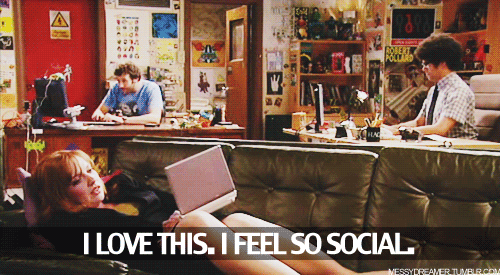
These are four steps that helped me survive high
school as a writer. It can be done. So good luck to all the young writers out
there. And get typing. Every word you type puts you closer to your dream.
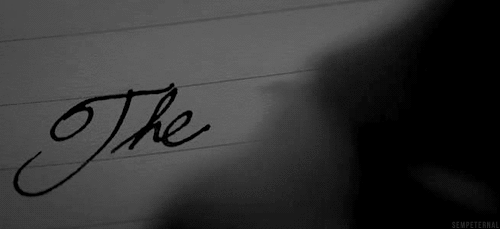
Friday, October 10, 2014
Elsa and Anxiety
So last time I talked about how Elsa, while a good
character, shouldn’t be held up on a pillar as a role model of independence.
But I want to get deeper into why she is relatable as a character. This is a
personal post. I know that Elsa’s struggle can be seen as symbolic as many
different real life struggles. But I want to focus today on how well Elsa
personifies dealing with anxiety.
I’ve written a post before on my anxiety and also
why I want to see it more in fiction (Right here). Elsa, to me, really captured what dealing with
anxiety is like. Especially in this scene.
 |
| She's literally attacking herself. |
Elsa is pacing around, speaking to herself. “Keep it
together. Control it. Don’t feel, don’t feel.” And I was struck as I watched
this movie for the first time how many times I muttered the same things to
myself in the dark when my panic attacks were at their worst. But no matter how
many times I said them, the panic only got worse.
Elsa is plagued by fear from an early age which
causes her to isolate herself. Fear of herself only makes the power worse, not
better. The harder she tries to suppress it, the more it seems to claw its way
out. The way she holds herself, hands close to her body, closed off from
everyone, is characteristic of a person who just wants to disappear. And that
stance was familiar to me.

She tries running away from the issue, which helps
for a while. I remember how good a change of scenery was for me when I left for
college. I had the longest period without anxiety attacks I’d ever had. But
when another one hit me after six months of silence, I felt the supposed
strength I’d built up crumble immediately. I hadn’t confronted the problems. I
had only stepped away from them and they had lay in wait, watching for an
opportunity to strike.
People try telling her to stop the winter (another metaphor for her anxiety) but since she doesn't know how, that only makes it worse. She can't just turn it off. Similar to anxiety.
 |
| Yeah... Can't do that so easily |
But I had to start looking for other ways
to calm myself. I had to look for the hope of the situation. Find things that were in my power and hold onto them to
calm my fears of things that weren’t. It was only when I started facing my
issues with optimism instead of fear that they started to improve.
Admittedly, my anxiety disorder is mild compared to
many. I don’t have to take medication for it. And I’ve gone almost eight months
now without a full-fledged anxiety attack. Four months without a close call.
Elsa found her happy ending. I think I’m on my way
to mine. Characters like Elsa, while not nessasarily perfect role models, are
important for people who are struggling and see no light at the end of the
tunnel. It might be just a Disney movie, but it is full of hope.
And hope, I still believe, is the most powerful
thing in the universe.

Wednesday, October 8, 2014
The 'Let it Go' Dilemma- Why you shouldn't Want to be Elsa
It’s been almost a year since Frozen blew into
theaters, smacking the world full in the face with catchy songs that wouldn’t
die for months to come. It was a force of nature, becoming the second highest
grossing movie that year, second only to Hunger Games. It broke the record for
the highest grossing animated film of all time. And, according to some, caused
the polar vortex with the sheer force of its popularity.
Or maybe that was climate change. In any case, it
was one mega hit. At this point, everyone has talked about it. It seems kind of
redundant to discuss at this point. But with Frozen now crossing over with Once
Upon a Time on ABC, and a million little girls buying Elsa costumes for
Halloween, it’s clear that the Frozen craze hasn’t died out. It has persisted
on. And that’s great, because I love Frozen. But I think sometimes people focus
on the wrong elements. Namely Elsa.
So today, I want to talk about something a bit
controversial: Why you shouldn’t want
to be Elsa.
Now I should mention, I don’t hate Elsa. Elsa is an excellent character. She’s well written
and complex. Beneath her beautiful voice, she has layers. She is also a
relatable character. The struggles she goes through can be representative of a
lot of real life struggles.
What she is not
is a perfect role model. She is not a pillar of independence either. And
she is not supposed to be, but I feel
a lot of people look up to Elsa in a way that they… shouldn’t. What do I mean
by that? Well, let’s look at Elsa’s arc throughout the movie.
Elsa’s
Journey
Elsa starts out as a girl enthused with her powers
over ice and snow. The abilities she sees as normal are called into question
when she hurts her sister, Anna, by accident. Elsa is then locked away from the
world by her parents in order to protect her but this only compounds her
anxiety and fear of herself. As a result she grows up into an unstable,
emotional wreck of a person hidden under a thin veil of control.
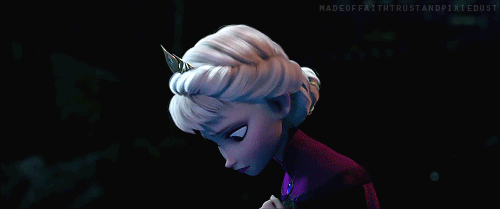
The control snaps and Elsa runs. It is in isolation
that she finds she can use her powers without fear and she ‘lets it go’ in the
most remembered moment of the movie.

And here’s where
we spy the problem. Most people get stuck at this part of the movie. The ‘Let
it Go’ part. A lot of people see this as an anthem of independence, especially
for girls. A statement that Elsa is strong and can stand on her own and
shouldn’t be forced to suppress who she is. This is the song everyone belts
with glee.
But here’s the funny thing about ‘Let it Go’. Given
its placement in the movie… it isn’t a happy song. Elsa thinks isolation away
from everyone is the solution to her problem and she is wrong. If this song was
at the end, it would have had different meaning. But here, after Elsa has fled
her home in favor of a life apart from everything she has ever known, it’s kind
of sad.
“But how can it be sad,” you ask. “Elsa seems so
free while she sings it. She’s smiling and relieved.”
That’s just what makes ‘Let it Go’ so complex. Elsa
thinks she has found the solution to her problems and she is relieved. But it’s
only a temporary solution. The fact that she would consider isolation as a step
up from what she had is incredibly sad. She’s just avoiding the problem further
like her parents did. Her parents locked her up. Elsa does the same thing on
her own terms. And neither of these things was the right thing to do.
Let’s continue to follow Elsa’s journey. After she
sings this rousing anthem that everyone focuses on, Anna finds her. And it
turns out Elsa is still consumed by fear. She’s afraid to be with her sister.
And after finding out the consequences of running away, she has a break down
and hurts her sister again. Only this time, the damage is worse.
Later, Elsa is captured after almost being crushed
by the chandelier of her ice palace. She breaks out and once again tries to
run, not believing that she can take care of her sister. After being told that
her sister is dead, she gives up and is ready to die. It is only Anna’s act of
true love that saves Elsa and Anna herself. And then Elsa discovers the true
answer to her problem. Not avoiding it. Not using fear to try to control it.
But love.
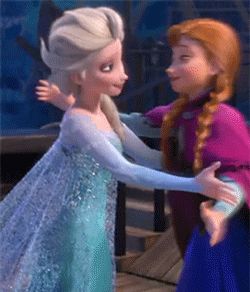
That is the answer to this movie in the end. Not
independence but love and community. This is not a movie about independence. It’s about going the distance for
the ones you care about most. It’s about sacrifice. And it’s about the power of
love. That is what allows Elsa to be who she truly is.
You see, we shouldn’t want to be Elsa. We should want
to learn from her.
Elsa is relatable. A lot of us have been in a place
where we feel alone. And we think the easiest solution is to stay that way. I
think a lot of people latch onto ‘Let it Go’ as a confirmation of what they
already believe. ‘I should just be independent and stand on my own and that’s
the solution’. But that’s not the true meaning of Frozen. Like so many Disney
movies, it’s about the redemptive power of love.
Now, Anna isn’t a role model either. Like Elsa, she
has her flaws and her problems. That’s what makes Frozen so great. The
characters are so very human. Relatable rather than examples to be followed.
Characters that go on a journey that we should learn from.
The thing is, I am
like Elsa a lot of times. I’m like Elsa during ‘Let it Go’. But I don’t
want to be. In the end, what I want and need is my family and friends. I need a
community. I need to acknowledge that I can’t do it on my own. And that’s what
Elsa needs.
That’s what all of us need.

Subscribe to:
Posts (Atom)